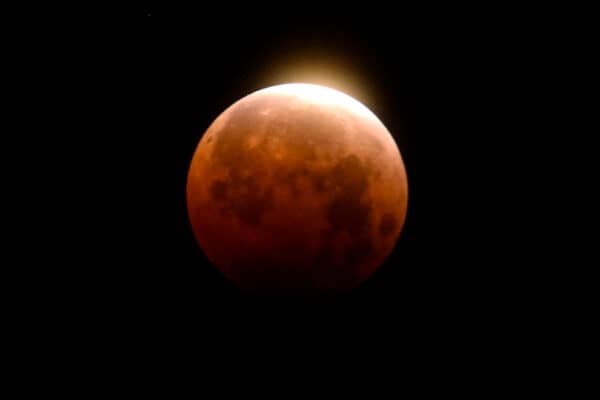SOURCE: AP — A total lunar eclipse will flush the moon red Thursday night into Friday morning across the Western Hemisphere.
The best views will be from North America and South America. Parts of Africa and Europe may catch a glimpse.
Lunar eclipses happen when the moon, Earth and sun align just so. The Earth casts a shadow that can partially or totally blot out the moon.
During a partial lunar eclipse, Earth’s shadow appears to take a bite of the moon. The full moon is covered during a total eclipse and blushes coppery red because of stray bits of sunlight filtering through Earth’s atmosphere.
Lunar and solar eclipses happen anywhere from four to seven times a year, according to NASA. A partial lunar eclipse graced skies in the Americas, Africa and Europe last September and the last total lunar eclipse was in 2022.
The so-called blood moon will be visible for about an hour starting at 2:26 am Eastern on Friday morning. Peak viewing will be close to 3 am Eastern.
To see it, venture outside and look up — no need for eclipse glasses or any special equipment.
“As long as the sky is clear, you should be able to see it,” said Shannon Schmoll, director of Abrams Planetarium at Michigan State University.
The setting of the moon may make it harder to see the eclipse in Europe and Africa.
“This is really an eclipse for North and South America,” said astronomy expert Michael Faison from Yale University.
If you miss out, mark your calendar for September 7 – another total lunar eclipse will sweep across parts of Asia, Africa, Australia and Europe.
Parts of the Americas will get their next taste in March 2026.
History of eclipses
Civilizations have viewed and interpreted lunar eclipses for thousands of years. Ancient people knew more about the celestial bodies than we give them credit for, said historian Zoe Ortiz.
They were looking at the night sky and they had a much brighter vision than we do today,” said Ortiz with the University of North Texas.
Aristotle noticed that the shadow the Earth cast on the moon during a lunar eclipse was always curved, observations proving that the Earth is round.
And a civilization in ancient Mesopotamia saw the blood red moon as a bad omen for the king. The people installed a substitute king on the throne around the time of the eclipse to protect their ruler from any bad will.
“If there’s ever a movie plot,” said Ortiz, “that’s the one.”


